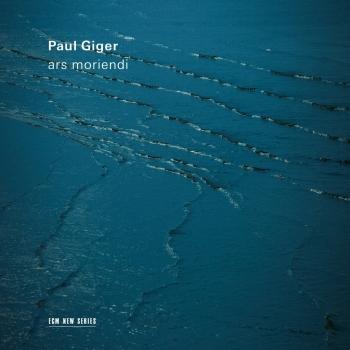
Trans Limen ad Lumen Paul Giger
Album info
Album-Release:
2017
HRA-Release:
24.07.2019
Label: DIVOX AG
Genre: Classical
Subgenre: Chamber Music
Artist: Paul Giger
Composer: Roman Rutishauser (1960), Paul Giger (1952)
Album including Album cover Booklet (PDF)
I`m sorry!
Dear HIGHRESAUDIO Visitor,
due to territorial constraints and also different releases dates in each country you currently can`t purchase this album. We are updating our release dates twice a week. So, please feel free to check from time-to-time, if the album is available for your country.
We suggest, that you bookmark the album and use our Short List function.
Thank you for your understanding and patience.
Yours sincerely, HIGHRESAUDIO
- Roman Rutishauser (b. 1960): Tenebrae:
- 1 Tenebrae: I. Tristis 08:00
- 2 Tenebrae: II. Vinea mea 09:59
- 3 Tenebrae: III. Eram quasi 05:24
- 4 Tenebrae: IV. Velum templi 02:47
- 5 Tenebrae: V. Tenebrae 06:55
- Paul Giger (b. 1952): Pert-Em-Hru:
- 6 Pert-Em-Hru: I. Media vita in morte sumus 05:47
- 7 Pert-Em-Hru: II. Altus Solo No. 1 03:56
- 8 Pert-Em-Hru: III. Glissauno media vita 07:25
- 9 Pert-Em-Hru: IV. Altus Solo No. 2 12:57
- 10 Pert-Em-Hru: V. Hinausgang der Seele ins volle Tageslicht 14:22
Info for Trans Limen ad Lumen
The Hilliard Ensemble is unique and belongs to the old and the new Music to the best vocal ensembles worldwide. The unmistakable style and the high developed musicality draw the audience with their medieval and Renaissance repertoire. The ensemble also stands out through a desire for new and unusual combinations. The Hilliard Ensemble and the well-known violinist Paul Giger perform here a new composition by Roman Rutishauser. Thus the Hilliard ensemble in the performances of TENEBRAE as a whole sound body situational improvisation. A new concept, probably never before has been realized. Rest and feelings of trust, solitude, but also treason, rebellion and unruly force form the theme of the concert. Long-lasting, harmonic sound images touch upon very basic aspects that touch in the deepest of the heart. The violinist Paul Giger, born in Appenzellerland, traveled at a young age as a street musician through Asia and then completed his music studies the conservatories of Winterthur and Bern. For three years he was the concertmaster of the Symphony Orchestra of St.Gallen, since 1983 he works free-lance. Gigers repertoire includes the violin literature from the baroque to the modern, further focal points form improvisation and own compositions for chorus, orchestra and orchestra Chamber music.
Hilliard Ensemble
Tablater Konzertchor
Collegium Vocale
Paul Giger, violin, violino d'amore
Paul Giger
who describes himself as a “violinist composer”, was born in Switzerland in 1952 and took up the violin aged eight. After he left school, he travelled through Asia, supporting himself by playing on the streets. When he returned to Switzerland, he studied at the Berne Conservatory from where he graduated in 1980, and then spent three years as first violinist of the St Gallen Orchestra. Since 1983 he has worked as a freelance soloist, with a repertoire that spans from the baroque era to contemporary music, with a significant place for his own compositions, many of which have featured on some half dozen albums for ECM’s New Series.
Giger’s first New Series release was Chartres (1989), a multi-part musical work which describes the pilgrim’s path through the eponymous cathedral where the recording was made. The musical material emerges from diverse traditions, ranging from classical to jazz, from Europe and Asia. Improvisation alternates with composed passages. Gramophone magazine wrote: “there is a marvellous sense of a man totally at one with his violin, voice and instrument simultaneously lost in contemplation of the marvels of natural harmonics”.
In 1992, Alpstein saw Giger collaborate with saxophonist Jan Garbarek and percussionist Pierre Favre in an evocation of mountain music of the violinist’s native land, while the solo Schattenwelt (“Shadow world”, 1993) offers a musical response to the classical myth of the Minotaur. On Towards Silence (2007), a collaboration with harpsichordist Marie-Louise Dähle, Giger includes recordings of classical compositions for the first time: movements from Bach are interspersed with free improvisations, effectively resulting in a subtle dialogue with Bach. The Strad called it “Giger’s most striking album to date”.
Booklet for Trans Limen ad Lumen











